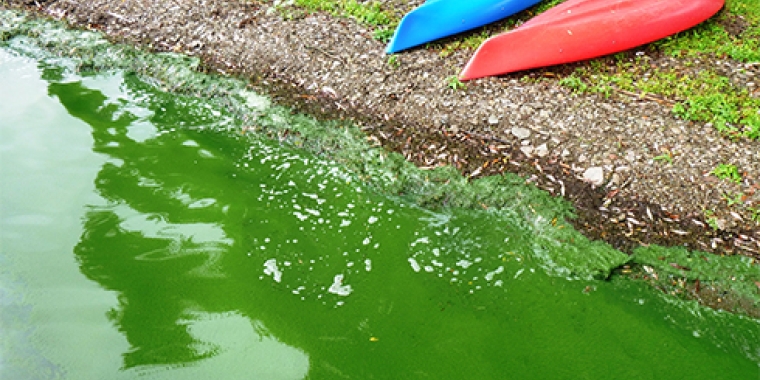
Harmful Algal Blooms: What to Know, How to Report
June 29, 2018
-
ISSUE:
- Environment
- Harmful Algal Bloom

With the extreme heat expected this weekend, conditions are set for increased numbers of harmful algal blooms (HABs) to grow in lakes and ponds. HABs, which are formed by high concentrations of blue-green algae or cyanobacteria, can produce dangerous toxins that can harm people and animals, close beaches and fishing areas, and threaten drinking water supplies.
The state is taking action to address this problem through an allocation of $60 million for specific projects that will be implemented at priority lakes and to also identify actions that can be taken at waterbodies statewide to reduce the threat of HABs.
It’s important for everyone who spends time in and around lakes and ponds to know if an HAB has formed. If you’re not sure how to identify an HAB, the state Department of Environmental Conservation has photos of algal blooms to help you differentiate between HABs and other non-toxic algae, and the state Department of Health has information about how to make sure your drinking water is safe.
If you see an algal bloom, please report it to the DEC. Notifications that DEC has received so far can be found here, and it is updated weekly.
Stay safe this summer!
Other Links:
